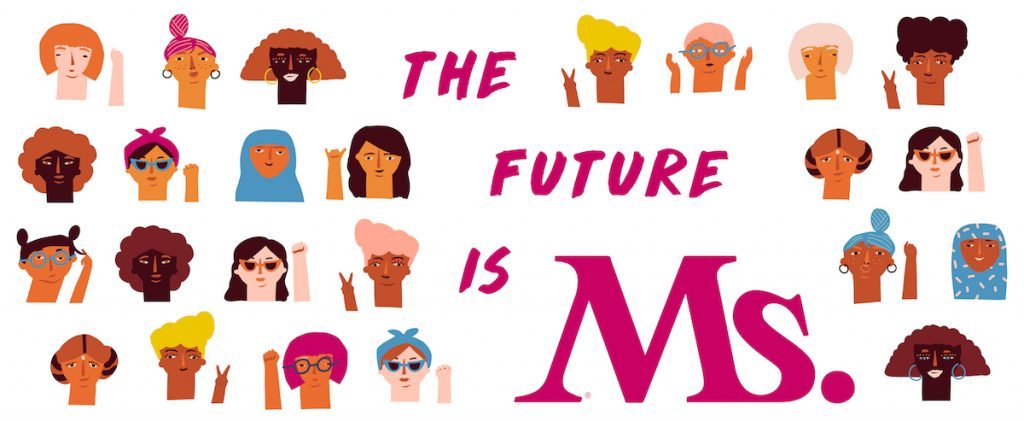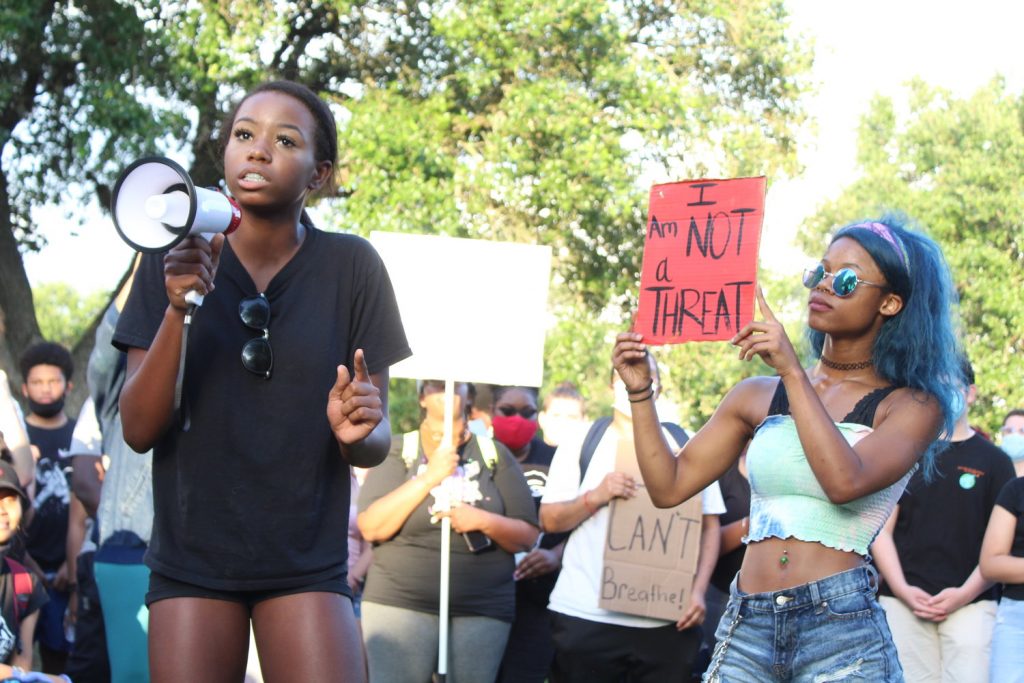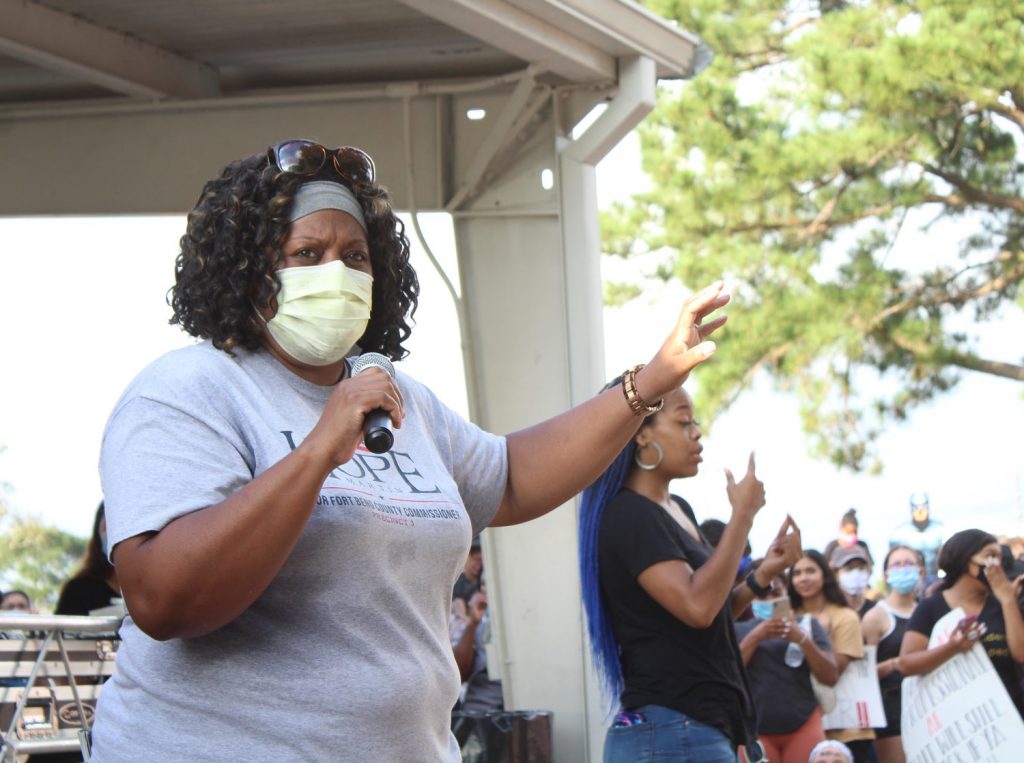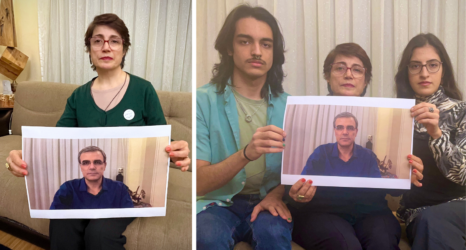
The Future is Ms. is an ongoing series of news reports by young feminists. This series is made possible by a grant from SayItForward.org in support of teen journalists and the series editor, Katina Paron.
It took four days of late night calls, 20 social media messages and a passion for change to get 1,300 teens to show up at Katy Park for a Black Lives Matter rally last summer in Katy, Texas. The teen organizers—Erika Alvarez, Jeffrey Jin and Foye Dosunmu—don’t recommend this frenzied approach, but they do urge young people take action.
“It was an out-of-body experience, and it was beautiful,” Dosunmu said. “It’s so great to see people fight for you and with you.”
Here are four tips the teens have on organizing a teen protest.

1. Get organized and delegate tasks.
Although the trio was able to plan a protest in four days, they emphasize that a protest isn’t something to be taken lightly. To start, they created a shared document to make sure that they had everything in one place.
“It can’t just be something you wake up and start texting people [about it]. You have to have people make graphics, plan on a Google Doc, ‘what-if’ situations and solutions to those,” Dosunmu stressed.
In their case, the urgency created the traction that made the event a success. “This is how things work,” Jin said. “People are furious, angry and enraged, and they tend to show up right after these things happen.”

2. Plan out the logistics.
At first, the teen organizers only expected 200 people to show up. However, when they saw the amount of attention they were getting on their social media pages, they realized that they needed to change their venue from a smaller park to a larger area and get a new permit. In most states, a permit is required at protests to regulate traffic in the area.
“Once you plan a protest, you should not be scared asking for a permit. Most of the time, [your city] can’t deny it because it’s part of our First Amendment rights,” Alvarez said.
Although the trio organized a protest at a large park, a protest doesn’t necessarily have to be an extravagant event. “A walkout against gun violence during sixth period at your school is a protest. It’s more about who shows up and your intentions of showing up, rather than where it is,” Jin said.
All the provisions—including snacks, water and masks—were donated by the community. In addition, a DJ lent his audio and stage equipment for speaker sessions. The only things that came out of the organizer’s pockets were the megaphones, which were $5 each.

3. Get endorsements from influential people.
The teens mostly used social media to promote the protest. At one point, they caught the attention of Ashton Woods, founder of Black Lives Matter Houston.
“We ended up getting his endorsement through Black Lives Matter Houston,” Jin said. “I think that also got us a lot of attention and helped boost our event to a larger audience.”
To find local influencers, try browsing the relevant hashtags or social media accounts. Look for people who share your message exponentially through their networks. The Katy teens only had 800 followers collectively, but with Woods on their side, they could now reach nearly 6,000 more through his connections.

4. Get adults and your community involved.
For every item they checked off their list, another thing popped up which they didn’t even know they needed. So, they turned to their community and adults for help. A DJ offered to perform at the protest; a medic reached out over Facebook to volunteer his services; a resident messaged the teens on Facebook about donating 1,000 masks.
“It’s hard to say a definite way to get your community involved, because there’s not really a definite way. Especially in larger cities, it’s using word of mouth and social media to your advantage,” Alvarez said.
Speakers were also an integral part of their protest. Although they had professionals, such as county officials, talk about their experiences living in a culture of racism, they also made sure to incorporate youth voices. As their final lineup, they had an open-mic session where teens had the chance to have their opinions heard.
“A protest isn’t a protest without hearing from those affected,” Dosunmu said.

The Future is Ms. is committed to amplifying the voices of young women everywhere. Share one of your own stories about your path to empowerment at SayItForward.org.





